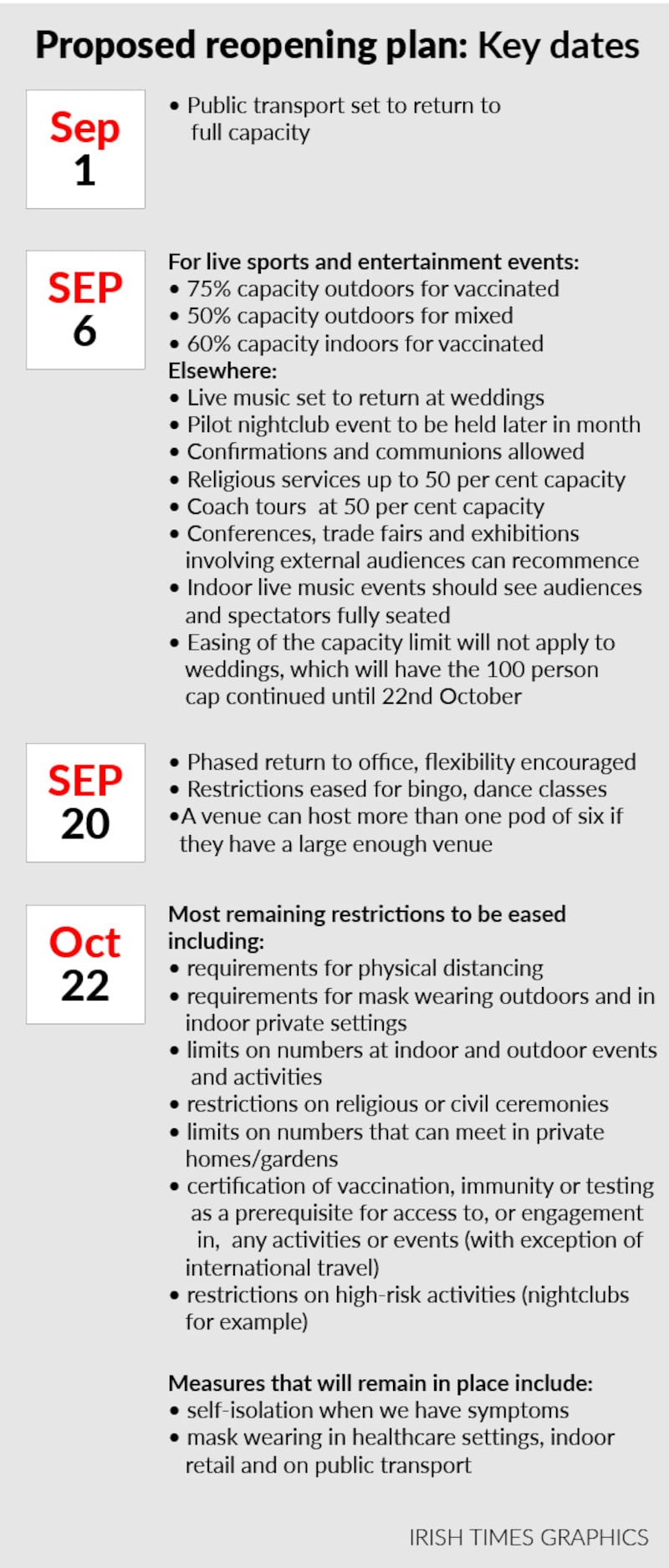The return to the old normal on public transport looks much like the new normal that we have endured for the last 18 months.
The first day of autumn is also the first day that public transport starts building toward 100 per cent capacity. It is also the beginning of the end for general Covid restrictions with a full return to normal, fingers and toes crossed, by October 22nd.
At Heuston Station where train, bus and Luas services converge, it was a busy morning with many Luas services standing room only, but services were not overwhelmed.
Heuston Station assistant manager Gerry Dalton said it was “like a normal day” pre-pandemic, and public transport operators are ready for the surge in numbers whenever it comes.
The first train in at 6.33am from Athlone was “very busy”with commuters who do flexi-hours, he said. “We expect it to get a lot busier. We will start to notice in September – you’ll see office workers returning and monthly and yearly tickets will start to rise again.”
National Transport Authority chief executive Anne Graham said 100 per cent capacity does not mean a return to 100 per cent full buses and trains, however. Currently public transport services are running at 55 per cent of normal.
“We haven’t seen services overloaded today, but we have seen a 4 to 5 per cent increase on last week. We see that slowly increasing,” she said.
The students have yet to come back to university, and people will only be returning to offices from September 20th, she said, adding that if a surge emerges, the transport operators will be ready.

“All the fleet was already operating. It was just a matter of taking the restrictions off the fleet. We are very happy to do it starting today.”
From Tuesday all those familiar yellow signs asking people not to sit in certain seats have been taken away.
Public transport operators have continued to operate because of a doubling in the public service obligation subsidy to €600 million – which has kept them on the rails and on the road.
Ms Graham believes it will be a long time before public transport returns to 2019 levels, the highest on record when 290 million passenger journeys were provided by Dublin Bus, Bus Éireann, Iarnród Éireann, Luas and Go-Ahead.
Many people now wish to continue working from home even after the pandemic is over.
“We have to see what kind of numbers are going to have to come back to public transport,” she said.
“As we move into the next budgetary cycle we have to see what funding is available. People will continue to work from home. We will see a short-term reduction in the peak of 20 per cent we expect, but that will build back up again. Public transport will recover.”
How quickly though? Ms Graham anticipates that it will take until the end of 2022 to reach 2018 figures on public transport as 2019 was an exceptional year with a 10 per cent increase across all networks.
She said BusConnects in Dublin demonstrated that if services are regular enough more people will opt to use them. The one introduced into Howth has seen bus numbers up by 9 per cent.
Orla Rooney, who commutes daily from Newbridge to Dublin Heuston, said she noticed more cars in the car park today.
She thought ramping up to 100 per cent capacity was a “bit of an aggressive move”. She has no fears about it though “but for older people I can understand their fears and anxieties. Personally I am getting on with things because I don’t have underlying conditions.”
Stephen O’Riordan, who was getting the train to Kilkenny, said 100 per cent capacity is “still a bit nerve-wracking after 18 months of being at home, but I feel a little bit more safe getting on a train and a bus.”
The return to 100 per cent transport is part of the Cabinet plan to fully reopen the country by October 22nd.
The wearing of a face covering on public transport remains mandatory, and the transport operators will continue daily cleaning regimes on their fleet.









